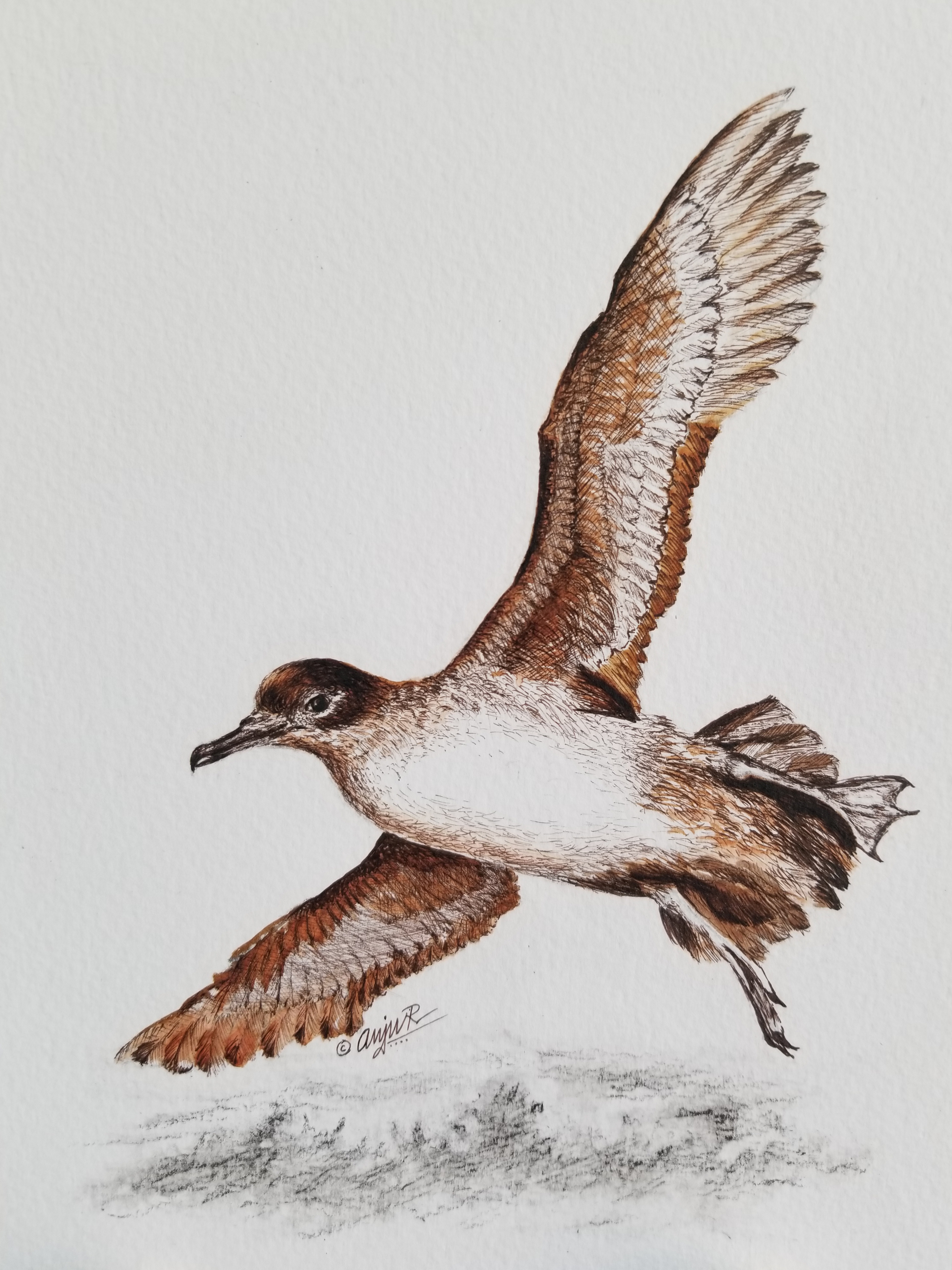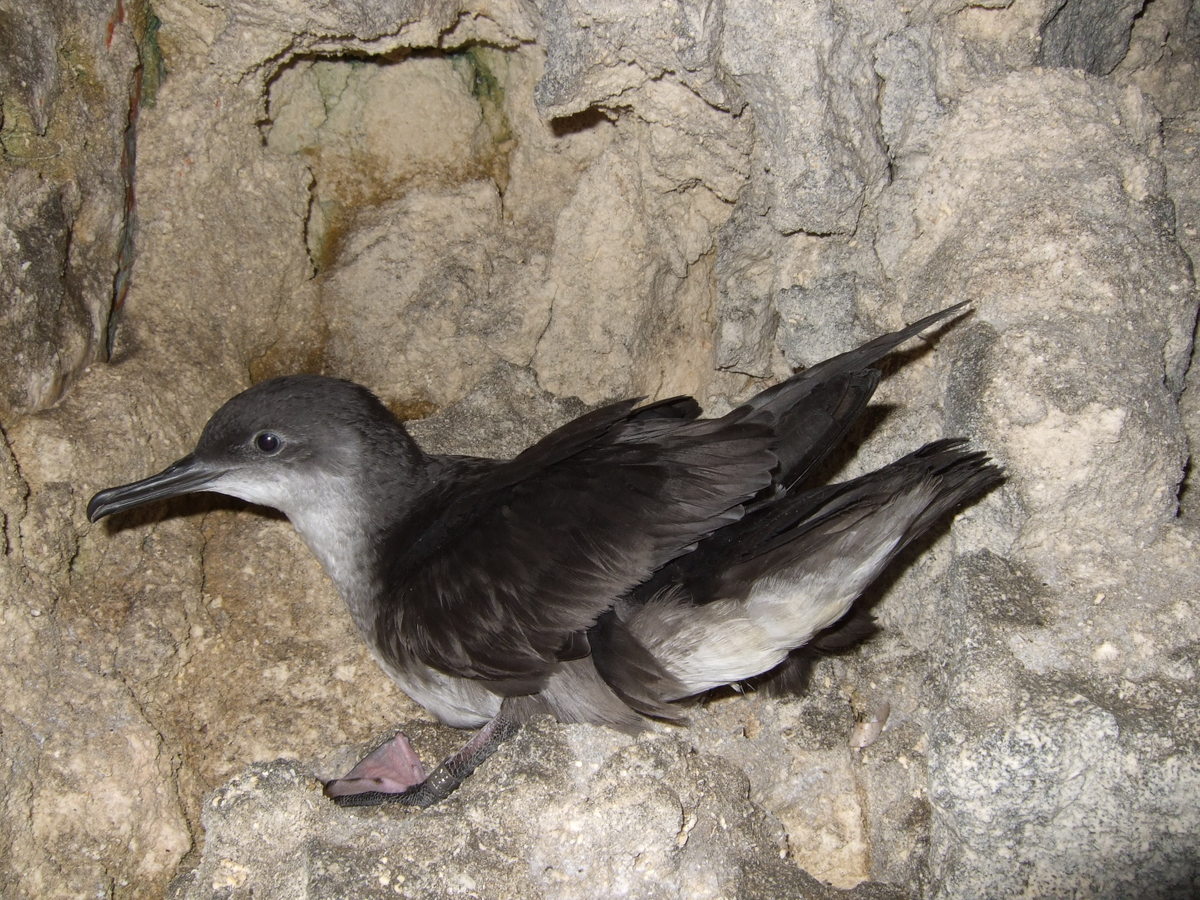
Balearic Shearwater by Anju Rajesh, after a photograph by 'Pep' Arcos
Joan Ferrer Obiol (Departament de Genètica, Microbiologia i Estadística, Universitat de Barcelona, Spain) and colleagues have published open access in the journal Molecular Phylogenetics and Evolution, finding that current taxonomies do not provide an accurate delineation of North Atlantic and Mediterranean Puffinus shearwaters. Based on their genetic study, they propose Yelkouan and Balearic P. mauretanicus Shearwaters should not be given specific status but be regarded as subspecies of the Mediterranean Shearwater P. yelkouan.
The authors state that the two taxa “are good examples of differentiated populations worthy of consideration as intraspecific units that represent unique morphological, ecological and genetic diversity for conservation of biodiversity. We stress that developing action plans for P. mauretanicus and P. yelkouan should not depend on whether these taxa are classified as separate species or not.”

A banded Yelkouan Shearwater in Malta, photograph by Andre Raine
The paper’s abstract follows
“Speciation is a continuous and complex process shaped by the interaction of numerous evolutionary forces. Despite the continuous nature of the speciation process, the implementation of conservation policies relies on the delimitation of species and evolutionary significant units (ESUs). Puffinus shearwaters are globally distributed and threatened pelagic seabirds. Due to remarkable morphological status the group has been under intense taxonomic debate for the past three decades. Here, we use double digest Restriction-Site Associated DNA sequencing (ddRAD-Seq) to genotype species and subspecies of North Atlantic and Mediterranean Puffinus shearwaters across their entire geographical range. We assess the phylogenetic relationships and population structure among and within the group, evaluate species boundaries, and characterise the genomic landscape of divergence. We find that current taxonomies are not supported by genomic data and propose a more accurate taxonomy by integrating genomic information with other sources of evidence. Our results show that several taxon pairs are at different stages of a speciation continuum. Our study emphasises the potential of genomic data to resolve taxonomic uncertainties, which can help to focus management actions on relevant taxa, even if they do not necessarily coincide with the taxonomic rank of species.”
Read an ACAP Monthly Missive on listing more shearwaters on the Agreement, including the Yelkouan, here.
Reference:
Species delimitation using genomic data to resolve taxonomic uncertainties in a speciation continuum of pelagic seabirds. Molecular Phylogenetics and Evolution 179. doi.org/10.1016/j.ympev.2022.107671.
John Cooper, ACAP News Correspondent, 08 December 2022

 English
English  Français
Français  Español
Español